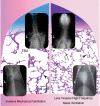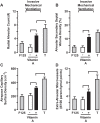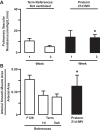Utility of large-animal models of BPD: chronically ventilated preterm lambs
- PMID: 25770179
- PMCID: PMC4437012
- DOI: 10.1152/ajplung.00178.2014
Utility of large-animal models of BPD: chronically ventilated preterm lambs
Abstract
This paper is focused on unique insights provided by the preterm lamb physiological model of bronchopulmonary dysplasia (BPD). Connections are also made to insights provided by the former preterm baboon model of BPD, as well as to rodent models of lung injury to the immature, postnatal lung. The preterm lamb and baboon models recapitulate the clinical setting of preterm birth and respiratory failure that require prolonged ventilation support for days or weeks with oxygen-rich gas. An advantage of the preterm lamb model is the large size of preterm lambs, which facilitates physiological studies for days or weeks during the evolution of neonatal chronic lung disease (CLD). To this advantage is linked an integrated array of morphological, biochemical, and molecular analyses that are identifying the role of individual genes in the pathogenesis of neonatal CLD. Results indicate that the mode of ventilation, invasive mechanical ventilation vs. less invasive high-frequency nasal ventilation, is related to outcomes. Our approach also includes pharmacological interventions that test causality of specific molecular players, such as vitamin A supplementation in the pathogenesis of neonatal CLD. The new insights that are being gained from our preterm lamb model may have important translational implications about the pathogenesis and treatment of BPD in preterm human infants.
Keywords: airway expiratory resistance; alveolar simplification; alveolarization; endothelial nitric oxide synthase; epigenetics; insulin-like growth factor-1; nasal CPAP; neonatal chronic lung disease; nitric oxide; pulmonary hypertension; vitamin A.
Copyright © 2015 the American Physiological Society.
Figures










References
-
- Abman SH, Chatfield BA, Hall SL, McMurtry IF. Role of endothelium-derived relaxing factor during transition of pulmonary circulation at birth. Am J Physiol Heart Circ Physiol 259: H1921–H1927, 1990. - PubMed
-
- Abman SH, Wolfe RR, Accurso FJ, Koops BL, Bowman CM, Wiggins JW Jr. Pulmonary vascular response to oxygen in infants with severe bronchopulmonary dysplasia. Pediatrics 75: 80–84, 1985. - PubMed
-
- Afshar S, Gibson LL, Yuhanna IS, Sherman TS, Kerecman JD, Grubb PH, Yoder BA, McCurnin DC, Shaul PW. Pulmonary NO synthase expression is attenuated in a fetal baboon model of chronic lung disease. Am J Physiol Lung Cell Mol Physiol 284: L749–L758, 2003. - PubMed
-
- Albertine KH. Anatomy of the lungs. In: Murray & Nadel's Textbook of Respiratory Medicine (5th ed), edited by Saunders NR. Philadelphia: Elsevier, 2010, p. 3–25.
Publication types
MeSH terms
Grants and funding
LinkOut - more resources
Full Text Sources
Other Literature Sources
Medical

